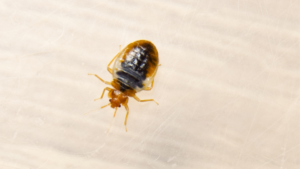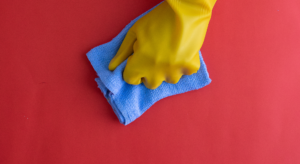Cotton Versus Microfibre: Pros and Cons
A cloth is a cloth – except when it’s not. As any professional cleaner knows, different fabrics and different fibres have their own distinct physical properties. Cotton and microfibre are widely used throughout the cleaning industry, with the latter material becoming increasingly popular in recent years. These fabrics rightly have their places in any professional toolkit, but a cleaner should be aware of both the benefits as well as the disadvantages of these two distinct materials.
An Overview of Cotton and Microfibre
Cotton, of course, is a natural material. As ScienceDirect explains, on a molecular level, cotton fibre is composed of cellulose, which is the main component in the cell walls of plants, where it offers physical support and structure. The individual fibres of cotton are hollow and soft. Microfibre, on the other hand, is a synthetic material. It is normally composed of a polyester or nylon blend and CleanLink notes that individual fibres of microfibre are around one-third of the size of those of cotton.
Cotton: Pros and Cons
As a cleaning material, cotton is lauded for being gentle on surfaces. In addition, cotton cloths require minimal financial outlay and so are seen as a cost effective material. CleanLink also points out that natural cotton is familiar and therefore widely trusted by cleaners. The outlet notes here that cotton will not disintegrate when used with bleaches or acids. Cotton cloths, as Cleaning Maintenance & Management explains, are often used for general cleaning purposes, especially on walls, counters and in bathrooms. When it comes to mops, European Cleaning Journal reports that some – like the Kentucky-style mop – are popular in industrial settings or when removing biohazards. Due to their cost effectiveness, in these instances, cotton mop heads can be disposed of after minimal use, if needed.
There are, however, a number of drawbacks to cotton as a cleaning material. According to Cleaning Maintenance & Management, cotton mops may distribute dirt across a hard surface, rather than removing it. The same, explains CleanLink, goes for cotton cleaning cloths. Cotton is known to retain dirt, bacteria and odours and requires frequent washing, a point which may impact the overall lifespan of a cloth. Cotton may also leave lint behind on surfaces, thus compromising the overall finish of a clean.
Microfibre: Pros and Cons
Despite being a relative newcomer to the cleaning industry, microfibre is incredibly popular among cleaning professionals. CleanLink observes that microfibre is well-liked for its absorbent properties and is able to hold as much as seven times its weight in water. It also offers a lint-free finish and, if properly maintained, has a long lifespan. In terms of soil removal, microfibre effectively lifts dirt from a surface and safely entraps it until it is washed. Comparing it to a traditional cotton cloth, ISSA, the Worldwide Cleaning Industry Association – citing a study made by the University of Washington Department of Environmental and Occupational Health Sciences – explains that microfibre is far more efficient at removing soils and even preventing the cross-contamination of surfaces. Explaining the science behind the efficacy of this material, Cleaning Maintenance & Management explains, “Microfibre is constructed with millions of microscopic hooks that attract, absorb and remove all kinds of dirt, dust and bacteria from surfaces.”
It can also be used to efficiently clean a variety of surfaces with or without chemicals and, when it comes to microfibre mops, ISSA adds that, under test conditions, these reduced the level of bacteria on floor surfaces by up to 99 percent, in comparison to just 30 percent for cotton mops.
For all of its advantages, there are, however, some points to consider for cleaners contemplating the use of microfibre. First and foremost among these, as CleanLink observes, is cost; in comparison to cotton cloths, microfibre is an expensive purchase. Secondly, the outlet notes, microfibre requires special care techniques to ensure its longevity and efficacy, some of which have been set out here by ISSA. Finally, ISSA also advises that cleaners or facilities teams looking to purchase microfibre pay careful attention to the overall quality of the fabric as it can vary considerably by individual manufacturer.
When it comes to cloths, there’s no right or wrong answer. Both cotton and microfibre offer a wealth of distinct physical properties and benefits when used under the right circumstances and with the correct knowledge.








